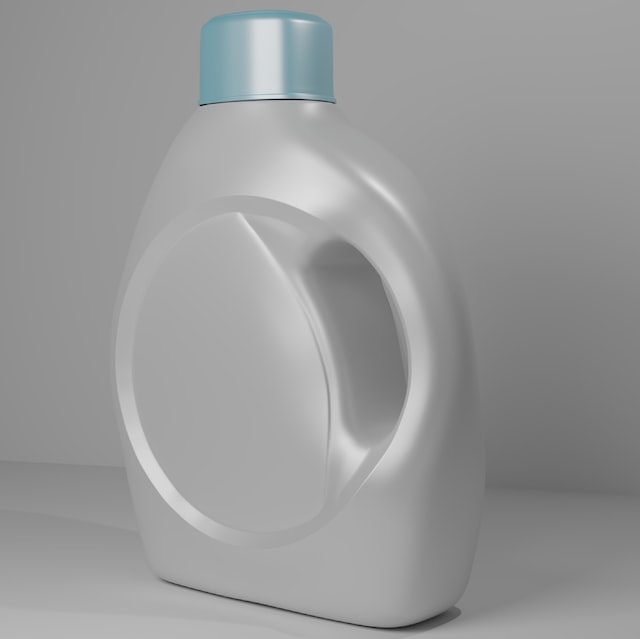Fabric softener and laundry detergent are separate laundry products that serve different purposes and have different effects on clothing items, but can you combine the two of them together in the laundry?
This article explores the differences between fabric softener and laundry detergent and examines whether or not they can be used at the same time in the washer, and if so, how.
At the end of the article also, there’ll be tips provided to guide you on how to effectively use both fabric softener and detergent in laundry.

First, what is a fabric softener?
A fabric softener is a laundry product that does exactly what the name says, to soften clothes and reduce static cling which makes them super comfortable to wear.
Fabric softener also helps to reduce wrinkles and make ironing easier. The scent that fabric softener adds to clothing items is just an added feature that come alongside the main deal.
Fabric softener comes in a variety of forms such as liquid, sheets and even pods, and these are meant to go in the washer during the wash or rinse cycle for proper coverage onto cloth fibers.
Fabric softener is effective on many clothing items including shirts, towels and bedding. Sometimes, it can be used to soften heavy duty household textiles such as curtains and upholstery.
What is a laundry detergent?
A laundry detergent is a type of detergent that is meant for doing laundry. It is specifically formulated with chemicals to help remove stains that are commonly found on clothing items such as dirt, ink, grease and oil, and it sometimes contains compounds that work to banish offensive odor from clothes.
Some of the chemicals used in laundry detergents include surfactants (meant to loosen dirt and stains), enzymes (for breaking down protein and starch-based stains), and bleaches (to remove tough-to-clean stains).
These aren’t the only ingredients you’ll find in laundry detergents. There are quite a few more such as boosters (for improved cleaning efficiency), stabilizers, solvents, brighteners, perfume and even softeners — all meant to either improve on how a laundry looks, smells, or feels.
Laundry detergents typically come in various forms such as powders, liquids, bars, tablets and capsules, and can be used in both traditional and high-efficiency washing machines.
Should you combine both fabric softener and detergent together in the wash cycle?
Both fabric softener and laundry detergent are designed to work differently and have different functions (as we have discussed above) and because of that, how they are used in laundry also differs.
Typically, laundry detergents are added during the wash cycle to aid with cleaning and stain removal whereas fabric softener is automatically dispersed (or expected to be added manually) into the machine drum during the rinse cycle.
This technique of application ensures that the fabric softener does not inhibit the laundry detergent from performing its work by coating it, and it also ensures that the fabric softener itself isn’t washed away with suds during cleaning.
Don’t get it wrong though, there are still some brands that recommend customers to pour or toss in their fabric softener during the wash cycle together with the laundry detergent, and doing so poses no issues whatsoever due to the technology used in the fabric softener that prevents it from affecting the functioning of the detergent.
So everything really boils down to the type of product you have. You want to make sure you check both the detergent and softener labels to really be sure of their compatibility together in the wash cycle.
Are there detergents that have fabric softeners in them?
Yes, there are detergents that contain fabric softener in them which are meant to serve as a cost effective and efficient option for users through the provision of a single step for both cleaning and softening.
Detergents with fabric softeners in them are commonly marketed as “2-in-1” or “3-in-1”, and they combine the cleaning power of laundry detergents with the softening properties of fabric softener. They mostly come in liquid containers.
There are many brands of laundry detergents that contain fabric softeners in them. Some popular examples include:
Tide Pods 4 in 1 Plus Downy: These are single-use pods that contain detergent plus conditioning technology to clean and condition clothes at the same time.
Dreft Stage 1: Newborn Liquid Laundry Detergent: This is a laundry detergent formulated to clean newborns’ delicate clothes. It contains simple and gentle ingredients that work to prevent the triggering of allergic reactions on baby’s delicate skin while making their clothes really soft.
Purex Complete 3 in 1 Laundry Sheets: These are detergents made in sheet form which contain fabric softeners in them as well as anti-static.
At what cycle should fabric softener be added?
Typically, when you’re adding the fabric softener manually by yourself, then it is recommended to do so during the rinse cycle of the laundry.
Adding fabric softener to the wash cycle together with the laundry detergent can cause it to coat the particles of the detergent and inhibit its working.
It could also mean the fabric softener would be washed away during cleaning and subsequent rinsing and therefore won’t be able to project its properties of softening as well as removing static buildup.
If you’re using the fabric softener dispenser that comes with your washing machine, you don’t have to worry about what cycle it gets dispensed as the machine is automatically programmed to dispense the softener during the rinse cycle.
If you’re adding it manually, however, make sure to pour it directly into the water pockets in the drum before the rinse cycle starts, unless the manufacturer of the product states otherwise.
For hand-washing or for delicate fabrics, add fabric softener to the final rinse water.
How much fabric softener and detergent should you use?
When we’re talking about how much softener and detergent to add to a load of laundry, we’re dealing with a very loose statement here.
Different softeners and detergents are formulated differently — remember that 2x concentration detergents like Persil exist, which makes it quite impossible to have a universal attempt at the question.
The best advice is to always check the product label for instructions.
If a rough estimate must be given, then it’s this: add about 2 ½ tablespoons of softener for a medium load of laundry or up to 4 tablespoons for larger loads. You don’t really need to worry about adding too much fabric softener (in one use) as all it does is to increase scent and make clothes feel much softer.
For the sheet variant of fabric softener, the recommended amount is one sheet per load. If you prefer a stronger scent or softer fabric, you can add more sheets to the load.
It is extremely important to avoid using fabric softener frequently especially on certain types of clothes such as towels and spandex which will lead to decreased absorbency (in the case of towels) dulling of finish and build up of odor (in the case of spandex and elastic) and even the attraction of dirt in other clothes.
For detergents, the proper amount to use per load of laundry depends on the size of the load, the type of detergent, hardness of water and the level of soiling.
Just like fabric softeners, detergents too can come in concentrated forms which would mean less quantity is required for the same amount of load. Going against this rule can cause overproduction of suds which can cause damage to the washing machine, as well as stiffening and fading of fabrics.
And just like softeners also, the ultimate solution would be to always refer to the manufacturer’s instructions on the detergent packaging for specific recommendations.
As for the general rule of thumb, use 1 pack of pods for a medium load laundry and 2 and 3 pods for large and extra large loads in both HE and standard washers.
For liquid detergent, small loads (2 to 4 pounds) should only require 1 tablespoon of normal concentration detergent. Medium loads of 4 to 6 pounds would require 1 ½ to 2 tablespoons and large loads of 6 to 8 pounds would require 2 to 3 tablespoons.
For HE machines, use the same quantity for small loads and the higher end of the range for medium and large loads.
For powdered detergent, your load should wash well with about 1 to 1 ½ ounces per medium load.


